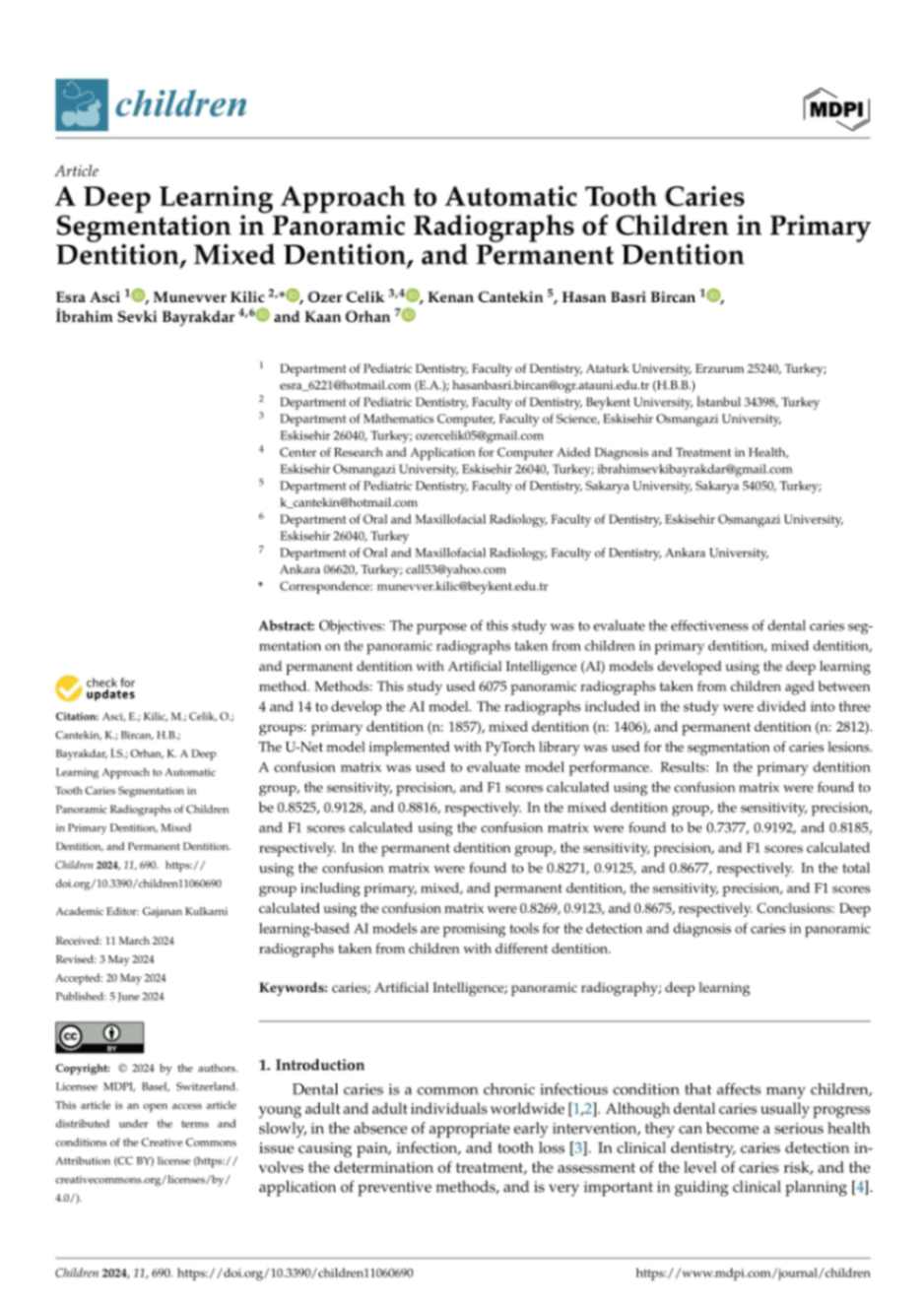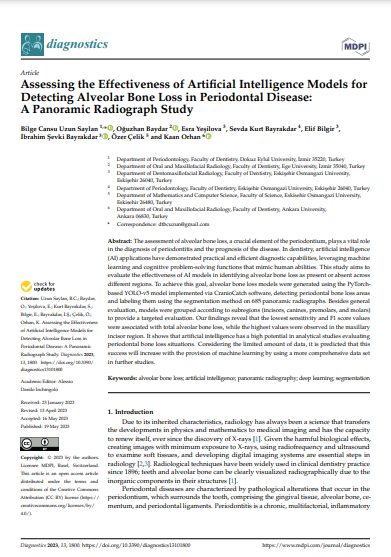Detection of Periodontal Bone Loss Patterns and Furcation Defects from Panoramic Radiographs Using Deep Learning Algorithm: A Retrospective Study
Objective and Methodology
- The main objective of the study was to develop a deep learning algorithm capable of accurately interpreting panoramic radiographs to aid in diagnosing oral health conditions.
- The study employed a retrospective approach, utilizing a dataset of panoramic radiographs for training and testing the deep learning model.
Success Metrics
- The success of the deep learning model was evaluated based on observer diagnoses in the test dataset, which served as the gold standard for comparison.
- The labels from observer diagnoses were used as the ground truth dataset for assessing the performance of the model.
CNN Architecture
- The study utilized the U-Net architecture, a type of Convolutional Neural Network (CNN) known for semantic segmentation tasks on various images, including radiographs.
- The U-Net architecture consisted of four block levels with different convolution filters in each block, enabling pixel classification and image segmentation.
- The encoder and decoder paths were employed for model training, incorporating max pool layers in the encoder paths and up-convolution layers in the decoder paths.
Advantages of Segmentation Method
- The segmentation method used in the study provided detailed information on the defective areas with clear borders, aiding dentists in assessing disease severity and planning treatment.
- By processing the defect area as a detailed map, the segmentation method offered advanced diagnostic support visually, enhancing the interpretation of panoramic radiographs.
Comparison and Limitations
- A comparison with other studies revealed the use of multiple observers and different AI architectures (U-Net and Yolo-v4) for assessing disease severity.
- Limitations of the study included the lack of separate comparison between multiple observers' decisions and AI predictions, as well as the focus solely on detecting bone losses without measuring disease severity.
Ethical Considerations
- The research protocol was approved by the Eskisehir Osmangazi University Ethics Committee, and all participants provided informed consent, ensuring compliance with ethical guidelines and regulations.
I Want to Write a Scientific Research Project
CranioCatch is a global leader in dental medical technology that improves oral care in the field of dentistry. With AI-supported clinical, educational, and labeling solutions, we provide significant improvements in the diagnosis and treatment of dental diseases using contemporary approaches in advanced machine learning technology.
CranioCatch serves thousands of patients with dental health issues worldwide every day with its innovative technologies. That’s why we eagerly look forward to meeting our valued dentists who wish to work in the field of 'Scientific Research in Dentistry'.



 Contact Us
Contact Us

